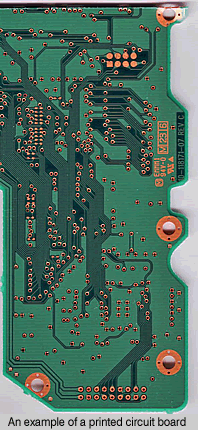HOME > Surface Finishing Tutorial > #018 Chemical Etching - Chemical Blanking
Surface Finishing Tutorial
#018 Chemical Etching - Chemical Blanking
Category : Metal etching
November 6, 2009
Processing techniques utilizing the chemical etching are collectively called "Chemical machining". This is a process of obtaining desired shapes and dimensions by restricting and focusing the metal dissolving chemical on substrates.
Chemical etching can be divided into the following categories.
| (1) | Chemical blankingBy etching through the material, parts of various shapes can be cut out (blanked) from thin plates and foil material. |
| (2) | Chemical machiningBy limiting the etching depth to less than the thickness and only partially removing the relatively thick material, three dimensional features are created. |
| These two etching methods are different only in terms of whether going through the material or not, and the methods of protective masking the areas no to be removed with resist coatings as well as the etching methods are the same. By this way of categorizing, the etching process to create precision parts and electronic components from thin plates correspond to Chemical Blanking, and the etching process used for printing plates and name plates correspond to Chemical Machining. The etching processes used for printed circuit boards and integrated circuits can be considered as chemical blanking since the subject copper material is etched through, but since the plastic portion of the substrate remains completely unaffected, it is considered somewhat different from the conventional chemical blanking of all copper substrate. These processes employ some means of applying protective resist material to manage and concentrate the effects of the etching, and to protect non-etched area of the material. As opposed to many other means of processing/machining, the etching processes do not use the similar tools or tool equivalents. Various machining, electro-discharge machining, electrolytic machining, and ultrasonic machining processes use tools or equivalent electrodes, and their relative movements against the materials to be processed result in the final products. As explained above, chemical blanking and chemical machining differ only as to whether the material is bored through or not, but the process characteristics will vary according to this difference and the application areas may also widely differ. |  |
- Environmental conservation
- Hot Dipping
- Anodic Oxidation Process
- Anodic oxidation treatment
- Anodizing
- Corrosion - Corrosion Protection
- Electroless Plating
- Electroplating
- Heat treating
- Hydrogen embrittlement
- Metal cleaning
- Metal etching
- Painting
- Special paints
- Surface Treatment
- Surface-treated steel sheets
- Thermal Spraying



